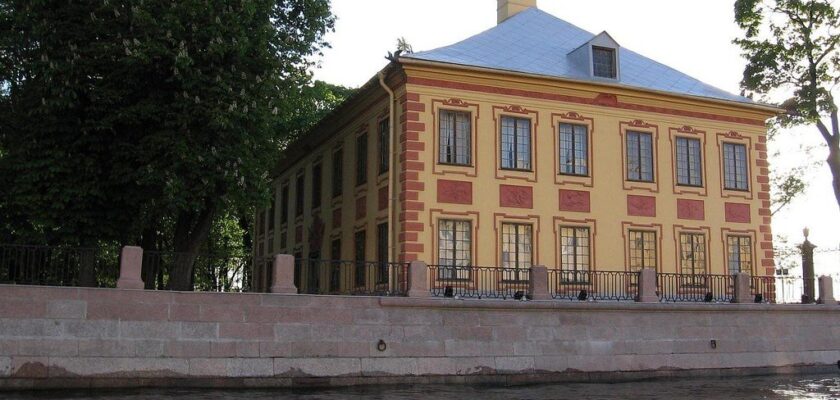Summer Palace of Peter the Great
Peter the Great’s Summer Palace was built in 1714 by Peter the Great’s architects Trezzini and Schlüter. A small two-story, rather modest building, made according to the fashion of those years in the “Dutch manner”, of course, can not compete in opulence with the royal residences of subsequent reigns. On its roof there is a weather vane in the form of the figure of St. George on horseback, and water-resistant pipes in the form of dragons at the corners. The bas-reliefs on the facades glorify Russia’s victory over the Swedes in allegorical form.
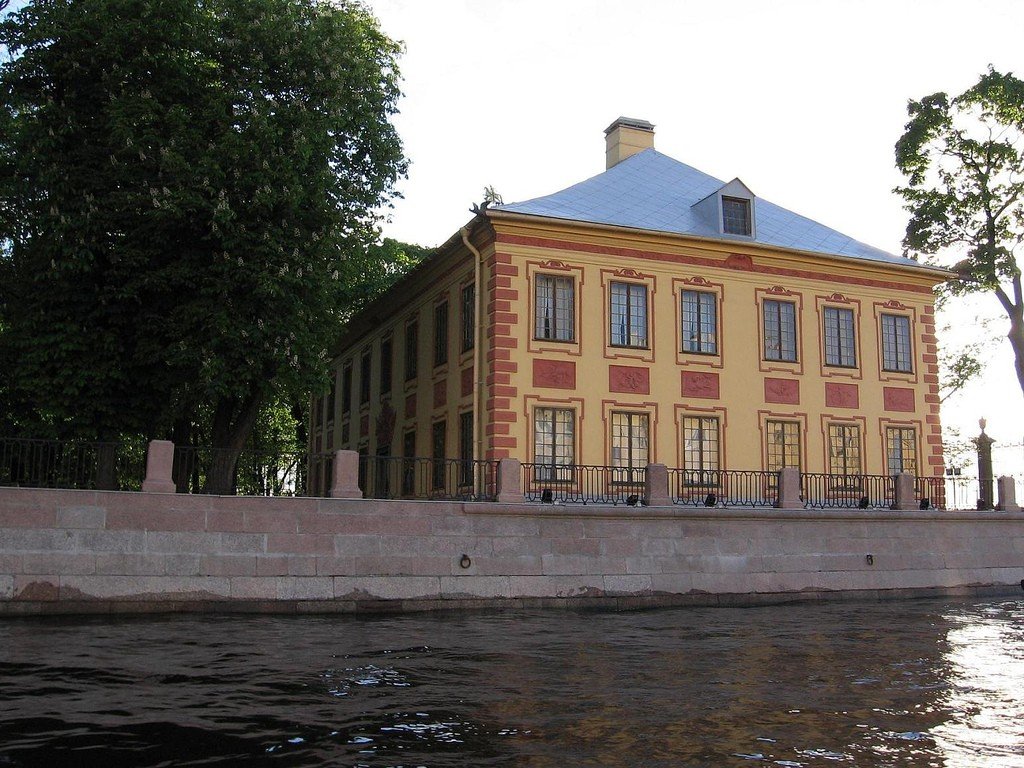
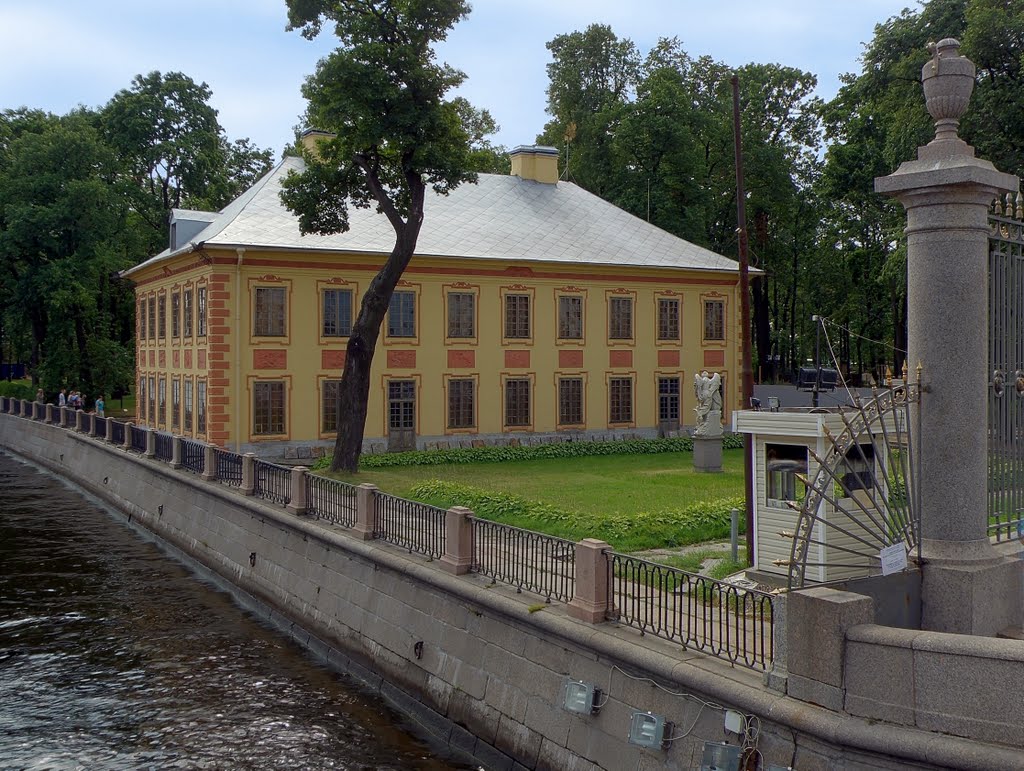
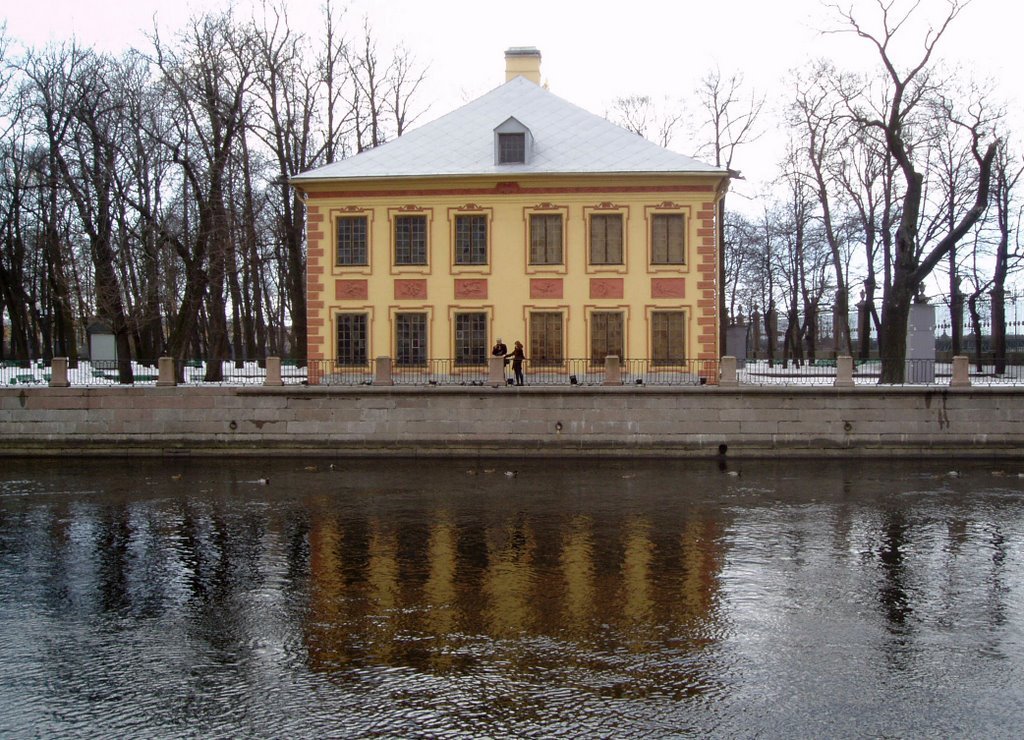
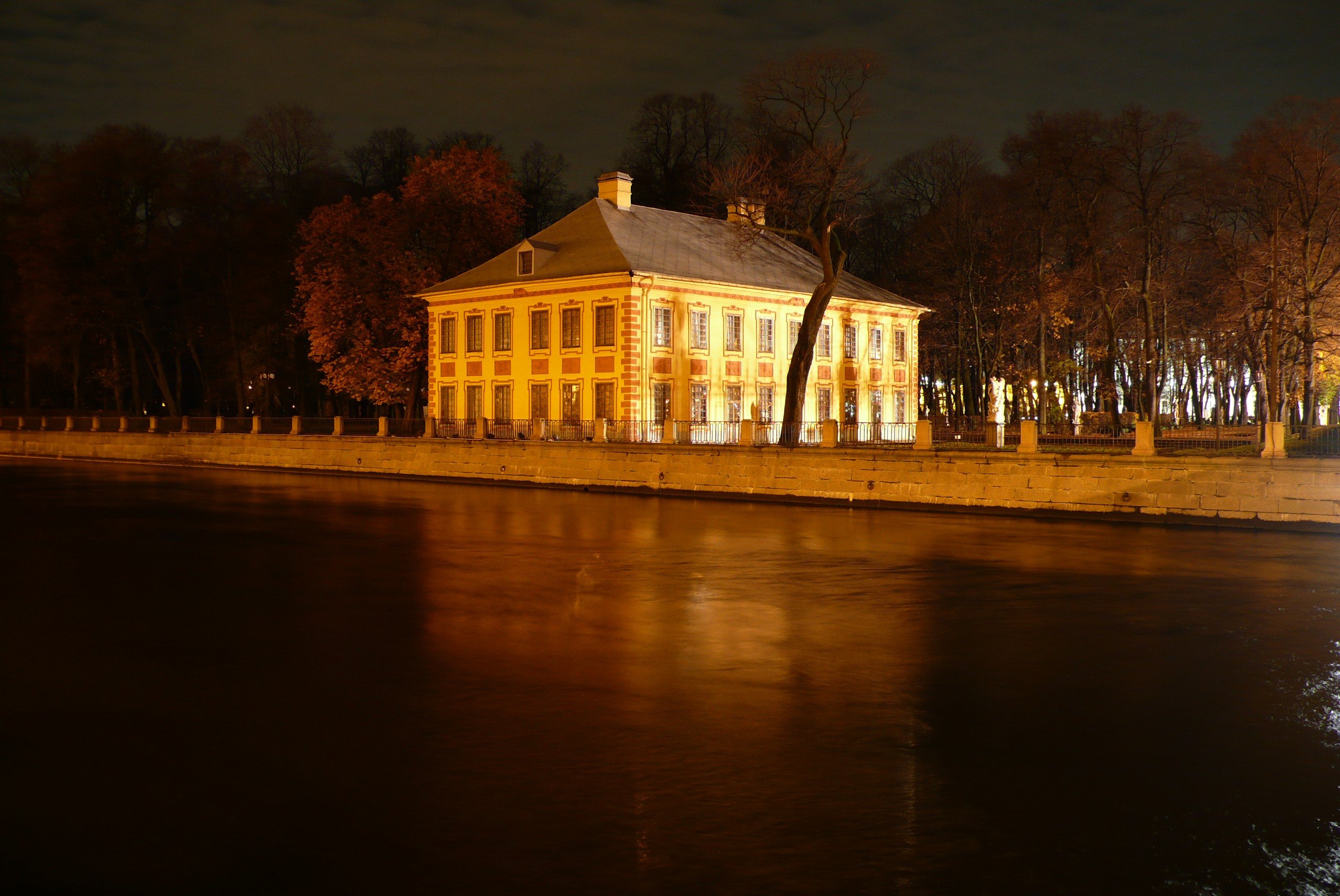
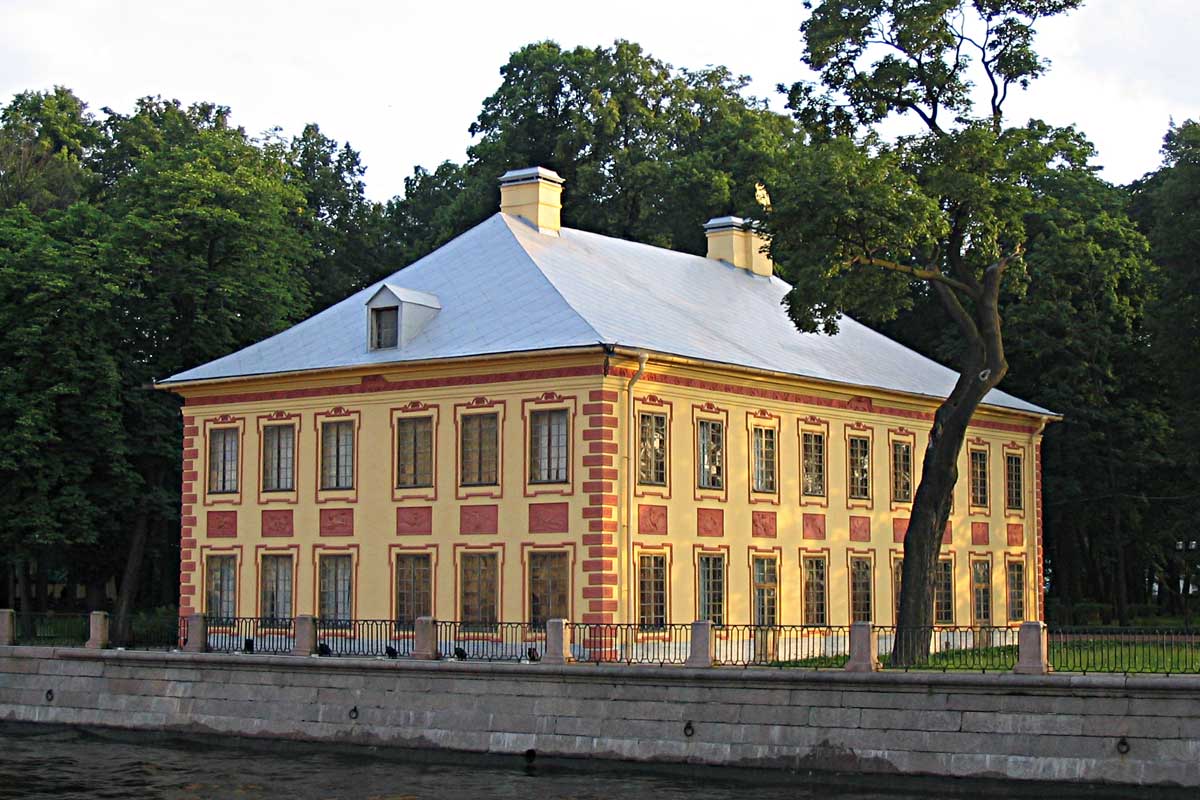
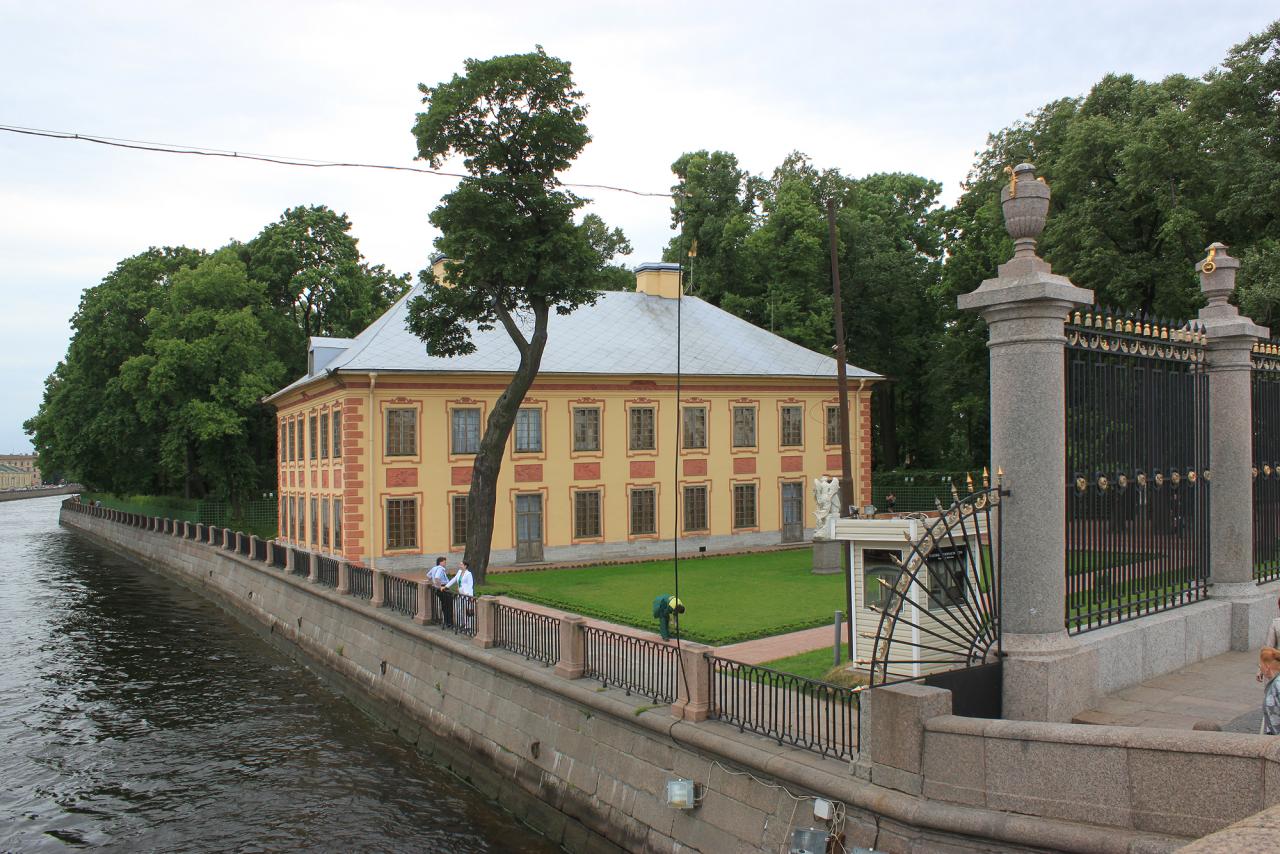
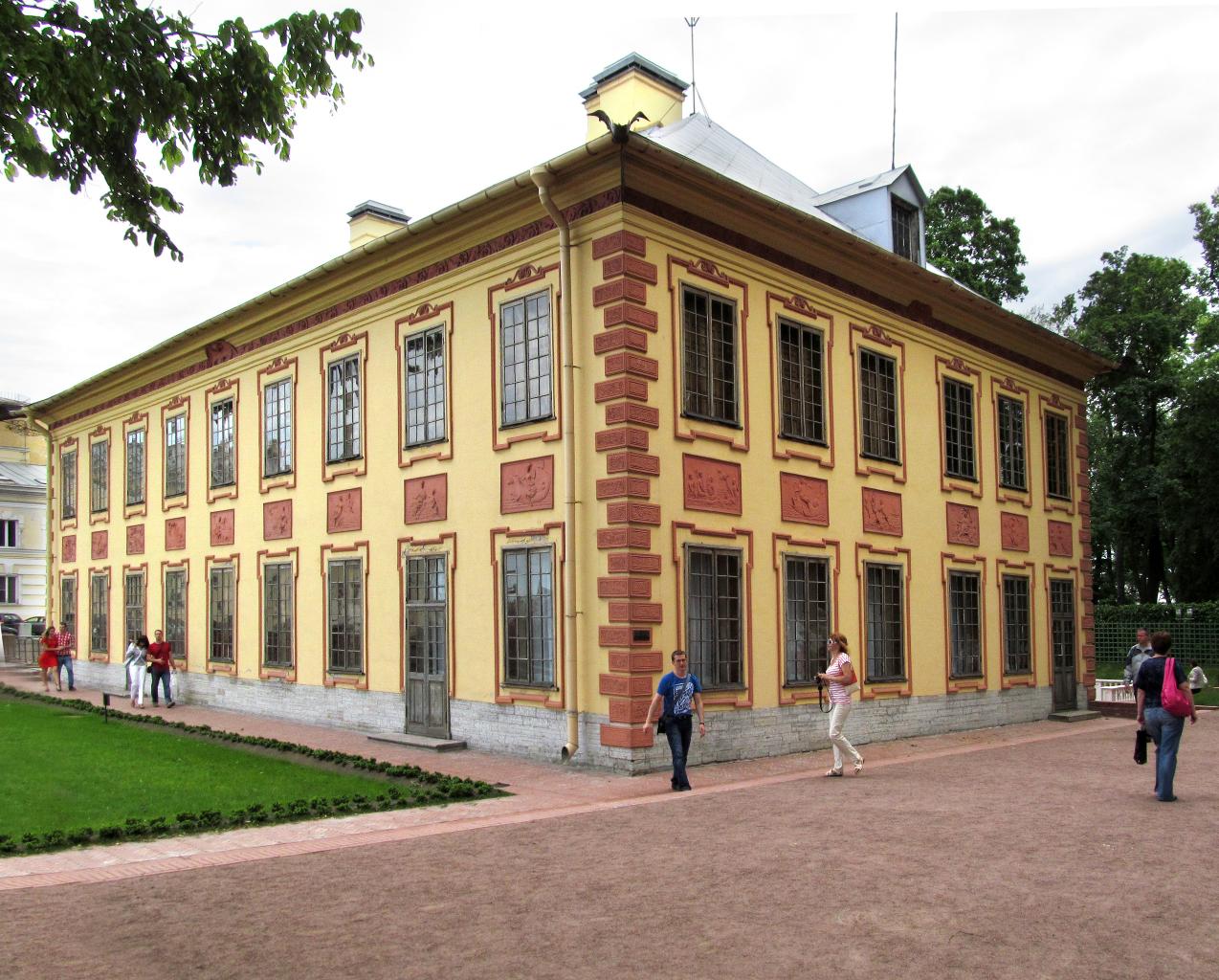

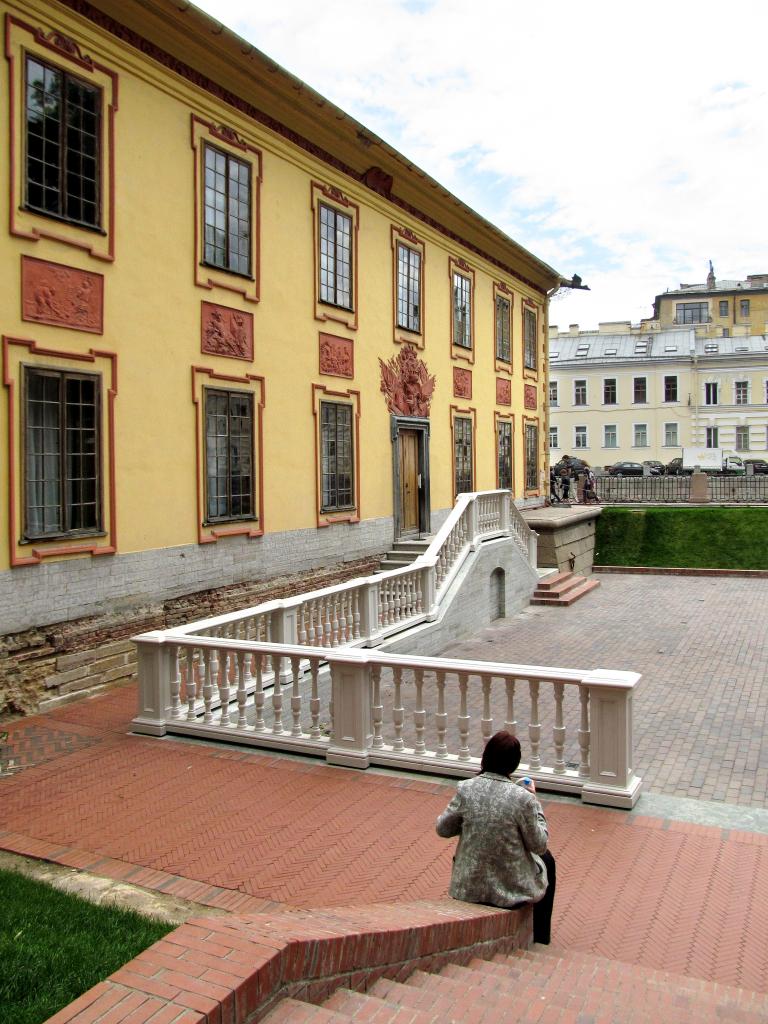
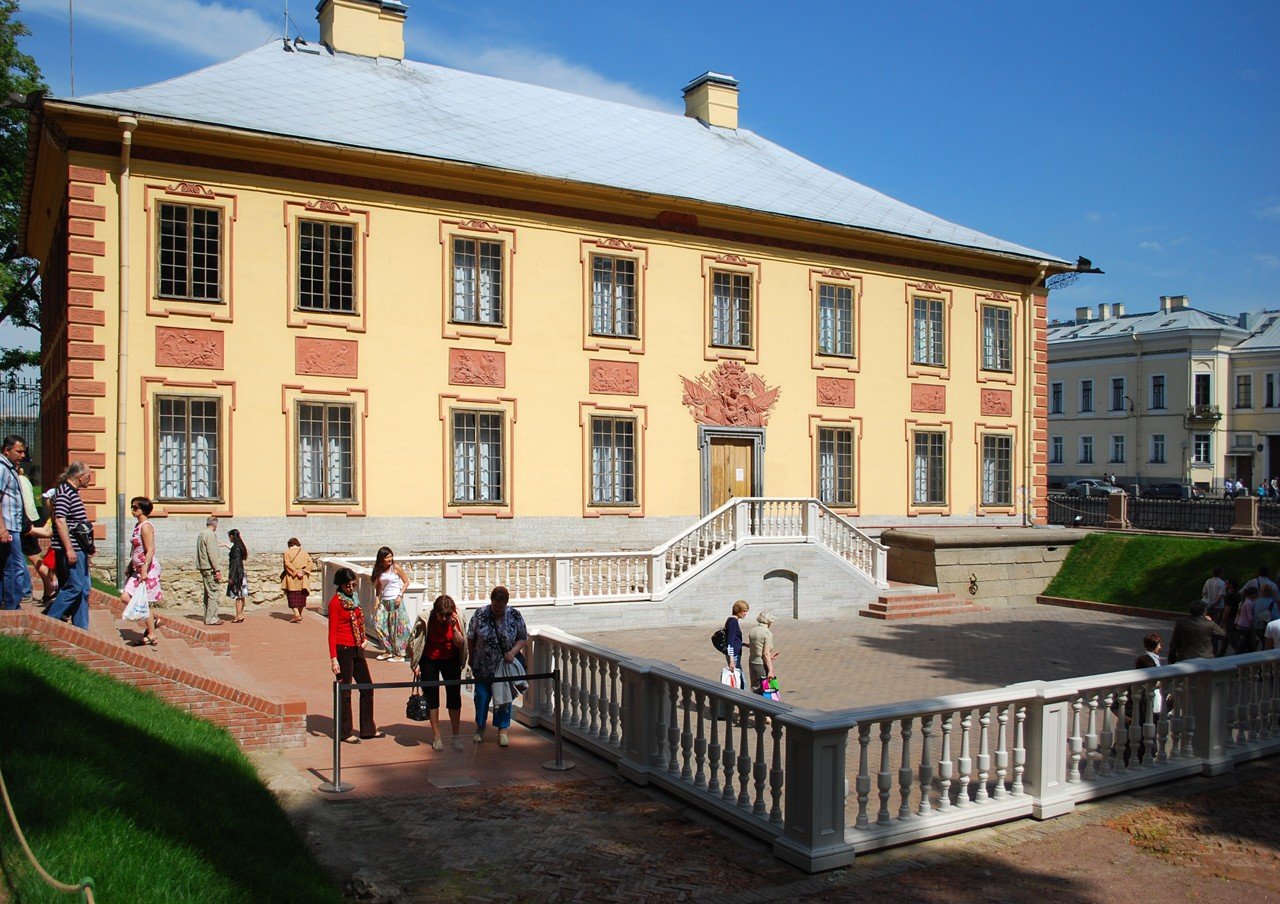
General information
The palace was lived in only in summer (May through October), so it has thin walls and single frames. It has only 14 rooms, two cookhouses and two corridors. On the first floor of the Summer Palace were Peter’s quarters, on the second floor – his wife Catherine and children. One of the most favorite rooms in the Summer Palace of Peter the Great was the lathe room, which was managed by the famous mechanic Andrei Nartov. By the way, it was in this palace that the city’s first running sewerage system appeared.
.
The Summer Palace has survived from the Peter the Great times to the present day without significant changes. In the early 19th century it served as a summer house for the highest state officials, and now it works as a museum.
.
Near the Summer Palace is the sculptural group “Peace and Victory” (or “Peace and Abundance”), made by the Venetian sculptor Baratta at the request of Peter the Great to commemorate the Peace of Nystadt, which ended the Northern War. “Peace” is personified by a seated female figure who holds a cornucopia of ears, vegetables and flowers in her hand. The allegory means: “Peace brings contentment.” The torch she lowers to the spoils of war lying at her feet is a sign of the end of war. The winged goddess of Victory with a palm branch in her hand crowns “Peace” with a laurel wreath, trampling a defeated lion with her foot, and this “means that strength is consoled by victoria,” as Savva Raguzinsky wrote in an explanation of the sculptural group.
.